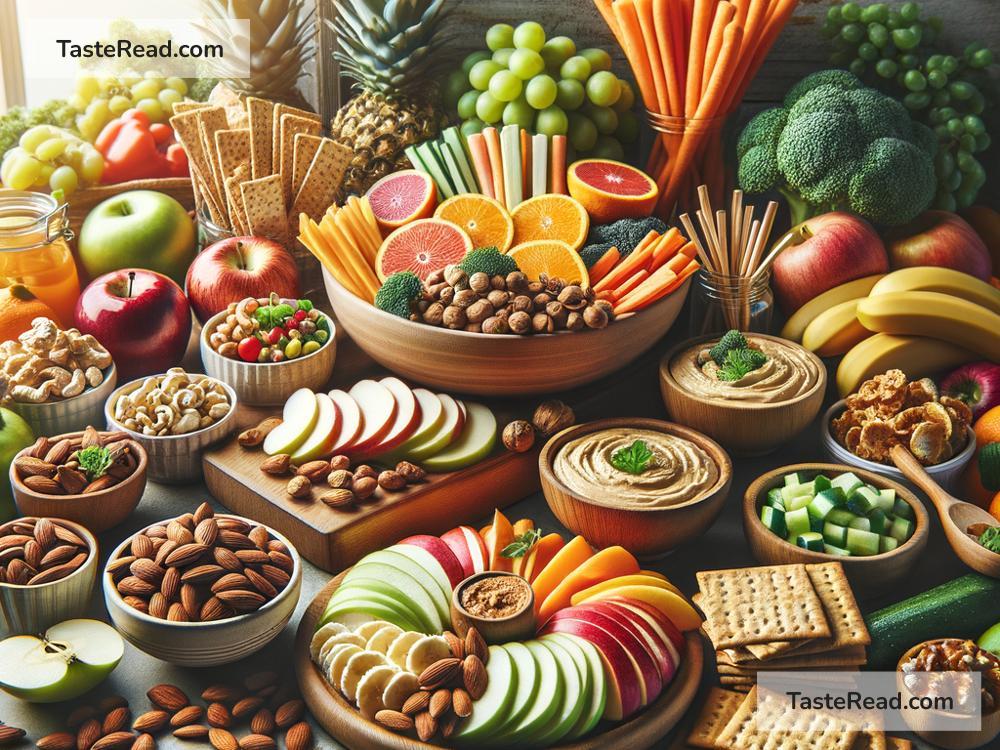How to Choose Healthy Snacks: What to Look For
Snacking can be a great way to keep your energy levels up throughout the day. However, many snacks are loaded with sugar, unhealthy fats, and empty calories. Choosing healthy snacks doesn’t have to be difficult. With a little know-how, you can pick snacks that not only taste good but also nourish your body. In this article, we’ll explore tips on how to choose snacks that are good for your health and provide your body with the nutrients it needs.
Why Healthy Snacks Matter
Snacks are like mini-meals between your main meals. They help keep your hunger at bay, provide energy, and maintain your blood sugar levels. Eating healthy snacks can also prevent overeating later, which might happen if you get too hungry. The snacks you choose can have a big impact on your health—so it’s worth taking the time to make better choices.
What to Look for in Healthy Snacks
If you want to snack healthier, here are some simple things to look for when choosing your snacks:
1. Lots of Nutrients
Healthy snacks should give your body something it needs, like vitamins, minerals, protein, or healthy fats. For example:
– Fruits like apples or bananas are full of vitamins and fiber.
– Vegetables like carrot sticks or cucumber slices come with minerals and fiber.
– Nuts and seeds provide protein, fiber, and healthy fats.
Snacks that contain nutrients will help you feel full longer and give your body useful fuel.
2. Low Added Sugar
Many packaged snacks are full of added sugar. Too much sugar can lead to energy crashes, weight gain, and other health problems. When shopping, check the nutrition label and ingredient list. Look for snacks with little or no added sugar. Instead, choose naturally sweet snacks like fresh fruit or dried fruit (but watch the portions, as dried fruit is more concentrated in sugar).
3. High Fiber
Fiber is great for your digestion and helps you stay full. Foods like whole-grain crackers, nuts, seeds, fruits, and vegetables are good sources of fiber. If you’re buying a packaged snack, look for words like “whole grain” on the label or make sure fiber is listed as one of the nutrients.
4. Healthy Fats
Your body needs fats, but not all fats are the same. Healthy fats, like those from nuts, seeds, avocadoes, and certain oils (like olive oil), are good for your heart and brain. Avoid snacks that contain trans fats or excessive saturated fats, like fried chips or high-fat baked goods. Always check the label for the type of fats the snack contains.
5. Protein Power
Protein is important to keep your muscles strong and to help you feel full. Good protein options for snacks include:
– Greek yogurt
– Hard-boiled eggs
– Nuts and nut butter
– Hummus with veggies
Protein-packed snacks will help you avoid the urge to keep snacking throughout the day, as they provide long-lasting energy.
6. Low Sodium
Eating too much salt isn’t good for your heart or blood pressure. Many packaged snacks, like chips and crackers, are high in sodium. Check the label and choose snacks with lower sodium levels. Fresh fruits and vegetables are naturally low in sodium and make great snack choices.
7. Simple Ingredients
One easy rule for healthy snacking is to choose foods with a short ingredient list—or no ingredient list at all! Whole foods like fruits, nuts, or veggies are free of artificial flavors, colors, and preservatives. When choosing packaged snacks, look for ones that have simple, recognizable ingredients (like oats, almonds, or dried fruit).
Healthy Snack Ideas
Now that you know what to look for, here are some tasty, healthy snack ideas to try:
- Fresh Fruits: Apples, oranges, bananas, berries, or pineapple chunks.
- Raw Vegetables with Dip: Carrot sticks, celery, cucumber, or bell peppers with hummus or yogurt-based dip.
- Nuts and Seeds: Almonds, walnuts, sunflower seeds, or chia seeds (just watch portion sizes!).
- Whole-Grain Crackers: Pair with slices of cheese or mashed avocado.
- Greek Yogurt: Add some fresh fruit and a sprinkle of granola.
- Boiled Eggs: A simple and protein-packed option.
- Smoothies: Blend fruits, veggies, and a source of protein, like yogurt or peanut butter.
- Homemade Popcorn: Make it plain or flavor it lightly with spices—skip the butter and salt.
- Energy Bars: Choose ones that are low in sugar and made with whole ingredients.
Tips for Smart Snacking
- Plan Ahead: Keep healthy snack options handy at home or in your bag. This will stop you from grabbing less healthy options when hunger strikes.
- Watch Portions: Even healthy snacks can add too many calories if you eat big portions. Use small bowls or bags to keep portions reasonable.
- Drink Water: Sometimes, thirst feels like hunger. Drink a glass of water and see if you’re still hungry after!
Final Thoughts
Healthy snacking doesn’t have to be boring or complicated. The key is to choose snacks that are full of nutrients and free from excess sugar, unhealthy fats, and artificial ingredients. By picking snacks that work for your body, you’ll stay energized, feel satisfied, and support your overall health. So next time you’re feeling hungry between meals, make it a chance to fuel your body with goodness. Happy snacking!


